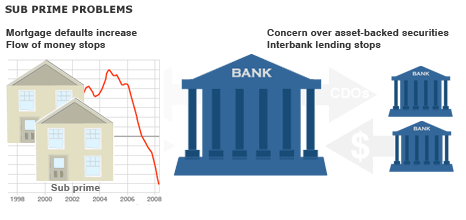CC: Debt Consolidation Lending
Debt Consolidation Lending Before the Credit Crisis
Consolidating debts into one loan used to mean “let’s pull money out of our home equity line and pay off the creditors” – and then the housing market collapsed, and with the collapse of the housing bubble came the end of the HELOC games.
Debt Consolidation Lending After the Credit Crisis
Now it works a lot like it should have worked before: you get a loan based upon your credit score, at a rate based upon your credit score, and, unlike before, you use money that you actually have (or money that you’re making) for payments.
The Credit Card Debt Consolidation Method
Let’s say for example that you have $20,000 of credit card debt spread over 4 different credit cards. You’re paying on them, and are current, but your interest rates are between 20% to 30%, per card. If you try to balance transfer your credit card debt to a new card with a low introductory balance transfer interest rate, you may get hit with a 3-5% fee, just for transferring your debt. On top of that, it is unlikely that any single lender will give you a credit line of $20,000, especially if you’re already close to the credit limit on your existing cards (otherwise why would you be using 4 cards?).
The days of 0% interest balance transfers are over, for most people, as transfer interest rates heavily depend on your current credit score, and most personal credit scores (in the US) have gone down. Way down. And interest rates, on debt consolidation loans, have gone up. Way up. But if your FICO is around 650 or so, it’s quite feasible to get a loan which has a much lower interest rate than the 20 or 30 percent that you’re currently paying – if your credit is not bad. And, if your credit is not bad, you really ought to consider getting a personal loan.
If you're stuck with debt (especially high-interest, 29.99% credit-card-type debt) and a bad credit score, not all hope is lost though! Recently, a number of newer non-bank financing companies have started offering consolidation loans for those with bad credit. Since they don't have a huge branch network to support and often operate only online, these finance companies are able to offer loans (which can be used for debt consolidation) to borrowers with scores less than 640. You probably won't get a great (less than 10% APR) interest rate, but you can certainly do better than the roughly 30% APR you're paying now. And, in many cases, making the trade between a 30% APR (for a variety of credit card debt) to a single consolidation loan (with an APR that could be anywhere from 5% to 15% lower) will make tremendous sense - and save you a lot of money!
